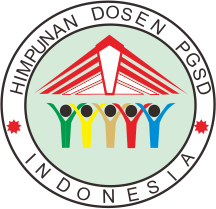Enhancing Classroom Learning through Hybrid Teaching and Learning: Insights from a Four-Session Training Program
DOI:
https://doi.org/10.30595/dinamika.v15i1.16923Keywords:
Hybrid Learning, Instruments, Problem SolvingAbstract
Hybrid learning, with a focus on facilitating students’ problem-solving skills, is a new and innovative approach which teachers can employ to inculcate higher-level thinking among their students. Accordingly, the purpose of this hybrid training program is to equip teachers with the skills to create hybrid learning instruments that facilitate problem-solving in their classrooms. The training methods include presentations, Q&A sessions, discussions and performances in the form of direct exercises guided by a facilitator (or resource person). Offline teachers from Madrasah Ibtidaiyah (MI) Muhammadiyah Kramat and online teachers from a primary school, or Sekolah Dasar (SD) MI Muhammadiyah Se-Banyumas attended the training. In general, training activities are structured into 4 stages, namely (1) training on creating instruments and implementing hybrid learning to support problem-solving; (2) assisting in the creation of hybrid learning instruments; 3) monitoring, testing, and implementing hybrid learning in the classroom; and 4) reflecting on the outcomes of implementing hybrid learning. Insights gained from the training program that aims to create hybrid learning instruments, are presented and discussed.
References
1] Kemdikbud (2020). Pemerintah Daerah Diberikan Kewenangan Penuh Tentukan Izin Pembelajaran Tatap Muka, diakses pada: https://www.kemdikbud.go.id/main/blog/2020/11/pemerintah-daerah-diberikan-kewenangan-penuh-tentukan-izin-pembelajaran-tatap-muka, date 20 November 2020
[2] Wibawanto, T. (2021). Memaksimalkan Pembelajaran Disaat Pandemi Melalui Hybrid Learning dengan Portal Rumah Belajar. Di undih pada http://lpmplampung.kemdikbud.go.id/po-content/uploads/Artikel_wibi_Hybrid_Learning_022021.pdf., date 19 Februari 2021
[3] Surat Keputusan Bersama (SKB) Menteri Pendidikan dan Kebudayaan, Menteri Agama (Menag), Menteri Kesehatan (Menkes), dan Menteri Dalam Negeri (Mendagri) tentang Panduan Penyelenggaraan Pembelajaran pada Semester Genap Tahun Ajaran dan Tahun Akademik 2020/2021 di Masa Pandemi Covid-19.
[4] Jeffrey, Lynn M, et.al. (2014). Blended Learning: How Teachers Balance the Blend of Online and Classroom Components. Journal of Information Technology Education: Research, 13 (2), pp. 121-140.
[5] Arifin, F.F. (2017). Hybrid Learning sebagai Alternatif Model Pembelajaran, di akses pada: https://www.researchgate.net/publication/344361017_Hybrid_Learning_sebagai_Alternatif_Model_Pembelajaran_Fauzan_Fatkhul_Arifin, date November 2017
[6] Sutisna, A. (2016). Pengembangan Model Pembelajaran Blended Learning pada Pendidikan Kesetaraan Program Paket C dalam Meningkatkan Kemandirian Belajar. Jurnal Teknologi Pendidikan, 18(3), 156-168.
[7] Thorn, K. (2003). Blended Learning. How to Integrate Online and Tradicional Learning, London: Kogen Page.
Downloads
Published
How to Cite
Issue
Section
License
Authors who publish with this journal agree to the following terms:
Authors retain copyright and grant the journal right of first publication with the work simultaneously licensed under a Creative Commons Attribution License that allows others to share the work with an acknowledgement of the work's authorship and initial publication in this journal.
Authors are able to enter into separate, additional contractual arrangements for the non-exclusive distribution of the journal's published version of the work (e.g., post it to an institutional repository or publish it in a book), with an acknowledgement of its initial publication in this journal.
Authors are permitted and encouraged to post their work online (e.g., in institutional repositories or on their website) prior to and during the submission process, as it can lead to productive exchanges, as well as earlier and greater citation of published work (See The Effect of Open Access).

Dinamika Jurnal Ilmiah Pendidikan Dasar is licensed under a Creative Commons Attribution 4.0 International License.













